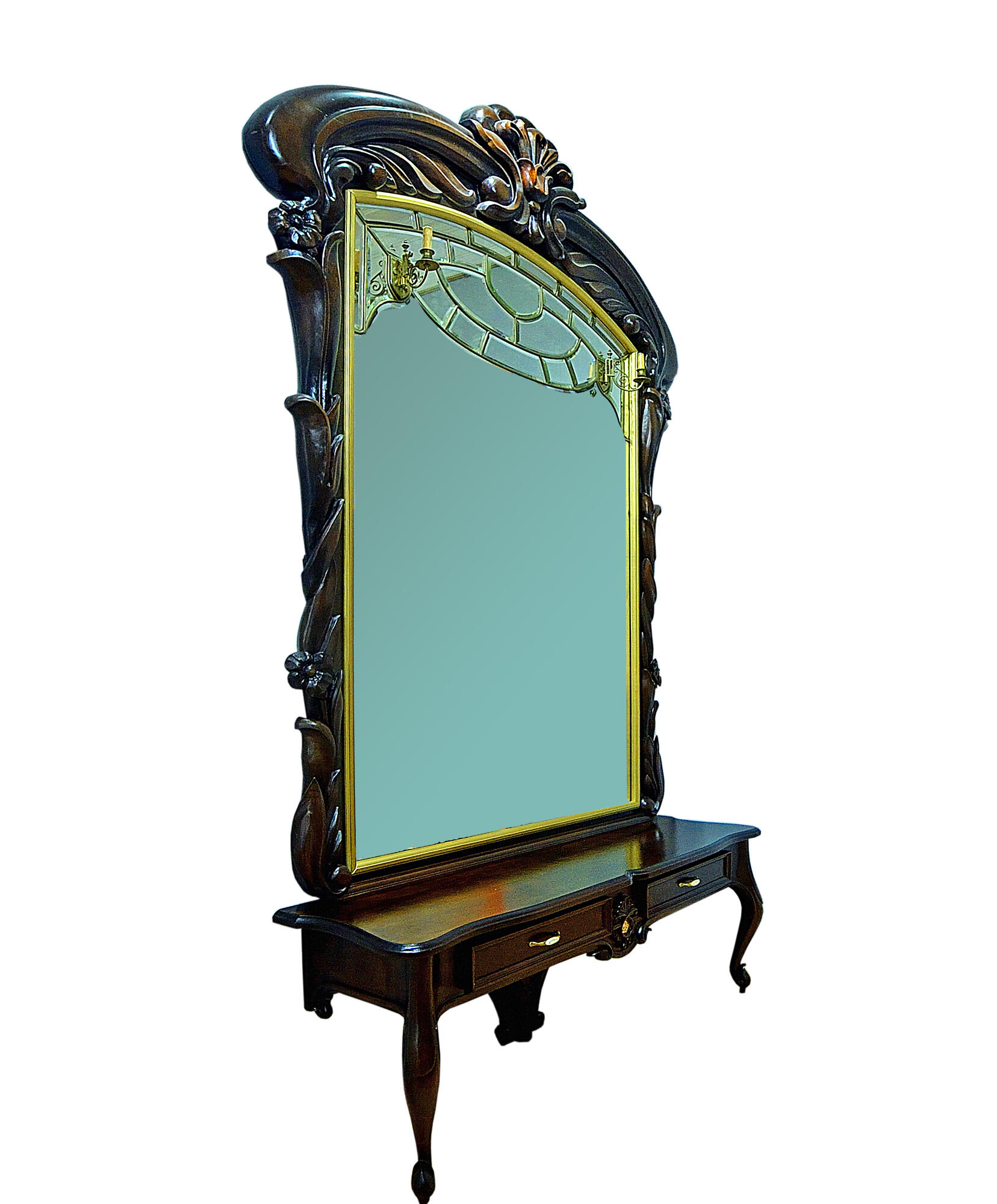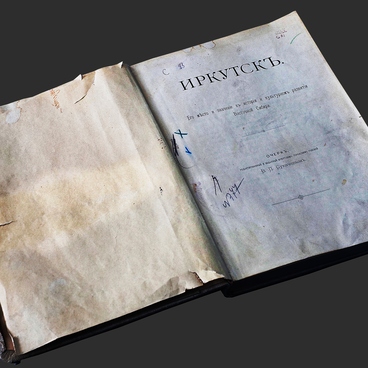This floor mirror made at the turn of the 20th century was primarily situated in the guest room of the main house in Pavlovka estate, that belonged to the Volkonsky family. It was coupled with another mirror, that didn’t survive to this day. With the start of new regime in 1917 the Volkonsky estate was nationalized, and the mirrors were taken to Borisoglebsk. At first they were installed in the hall of a culture club of a summer school. This exhibit item became a showpiece at the exhibition Siberian Passage, a project of The Borisoglebsk History and Art Museum in 2014.
Such materials as wood, glass, and bronze were used to make this mirror. However, there’s a suggestion that primarily it didn’t have a frame. The carved wooden frame, pier table, and brassy chandeliers were added to the mirror thanks to the craftsmen of the Borisoglebsk House of Crafts.
The decorative element looking like a web is made in art nouveau style. This style got widespread in the interior decoration of the country estates and apartments at the turn of the 20th century. The furniture of the epoch is characterized with smooth and wavy forms, roundy lines. Craftsmen actively used floral elements, nature motifs with stylized flowers and herbs having prolonged lines as a core motif.
Green and grey, rose and lilac, yellow and green palettes were popular in decoration of upholstered surfaces. Among all the materials, as a rule, harewood, ash, and beechwood were preferred.
The craftsmen of Borisoglebsk House of Crafts recreated the elements for the exhibit item in the same style. The item looks like a drop. The mirror was framed with a carved frame. On each side it’s decorated with entangled flowers on the long scapes with the wide, slightly oval-shaped leafs.
The upper part of the frame with its shapes reminds of incoming waves, in the centre the craftsmen put the branch of elegant flowers. The wave motif held a main place in art nouveau style. The wave itself is the natural concept of an object and the depiction of its smoothness, it’s also a semantic point of the origin of life from the water.
One of the bright examples of using such motif is the interiors of the mansion that belonged to the Russian businessman Stepan Ryabushinsky (1874-1942) and was created by an architect and a painter Fyodor Schechtel (1859-1926).



